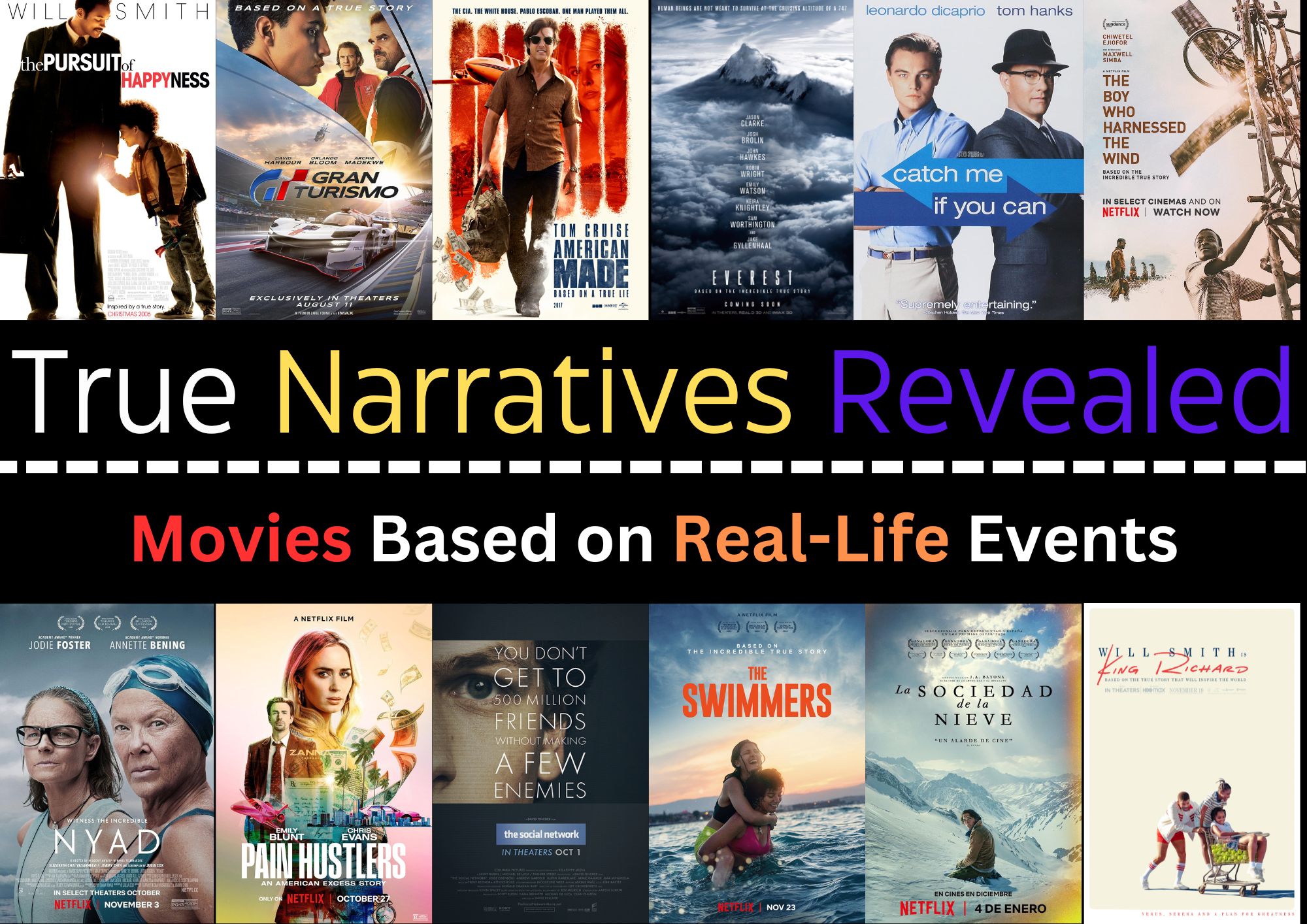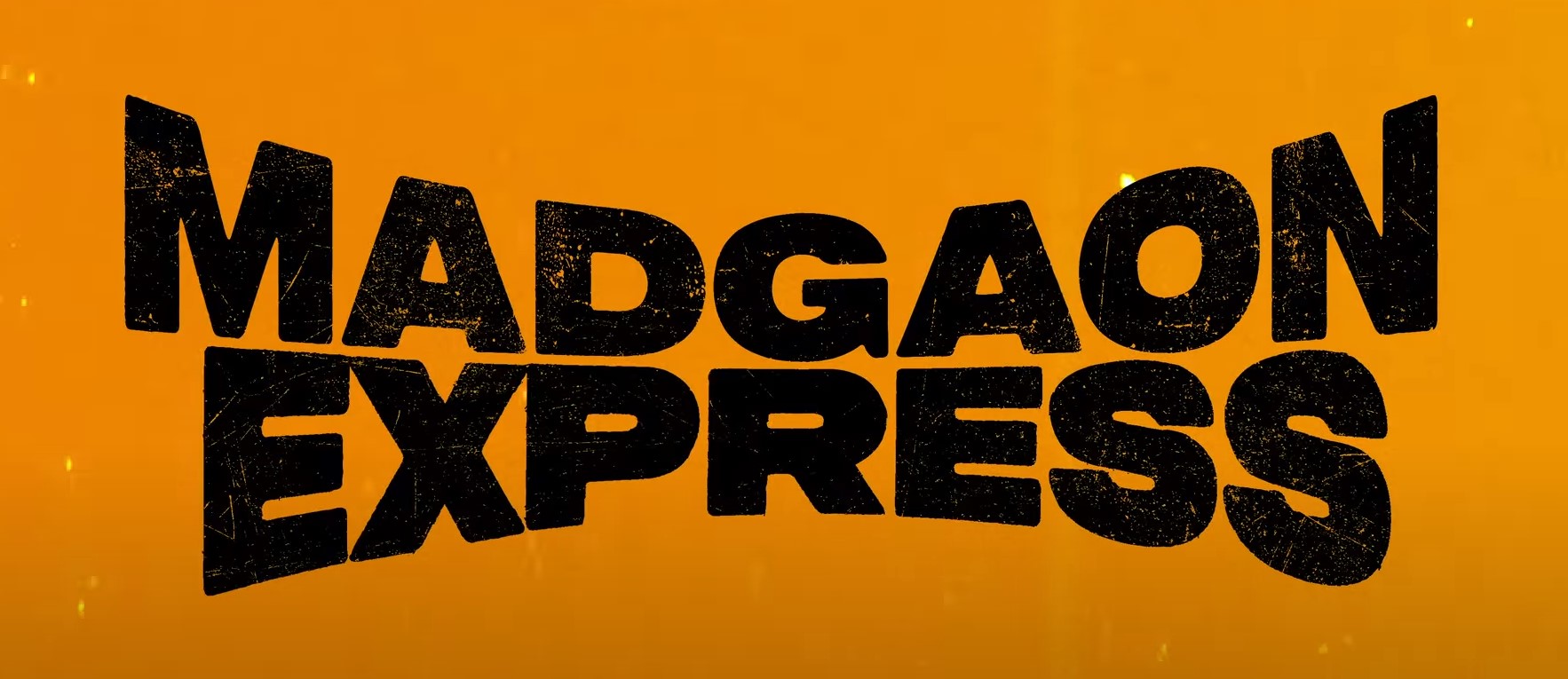Following up on his 2021 adaptation of Frank Herbert’s future masterpiece “Dune,” filmmaker Denis Villeneuve has gone even farther in this follow-up. The plot is boldly resumed in the sequel, which is set in the aftermath of the first film and offers both familiar and phantasmagoric visions. Villeneuve puts up a fantastic display, much like Timothée Chalamet’s gorgeously coiffed hero who drives enormous sandworms over the desert like a charioteer. “Dune: Part Two” is a wonderful film that showcases the art of cinematic spectacle in all its glory.
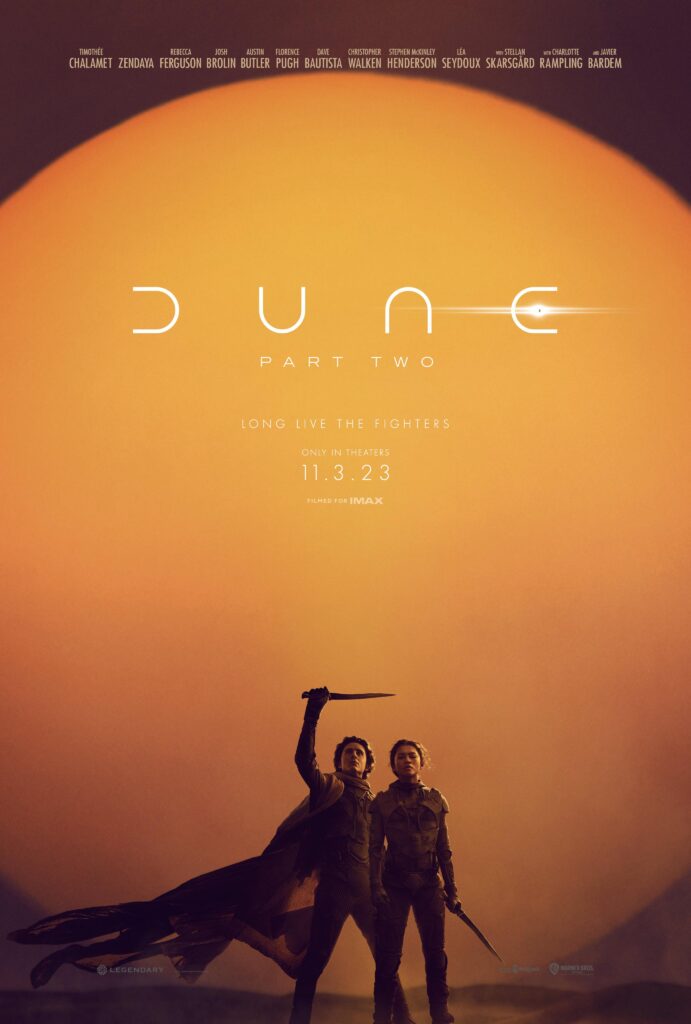
Despite all of its ferocity and doom, this moonshot is remarkably agile. Every image in big-screen productions, especially those adapted from books that have a sizable and fiercely devoted fanbase, tends to be ponderous. In some, the sheer amount of work filmmakers put forth to transform endless pages into moving pictures that burst off the screen with equal creativity, vitality, and vibrancy is palpable. When filmmakers become overly attached to the original material, their adaptations run the risk of being ruined by loyalty.
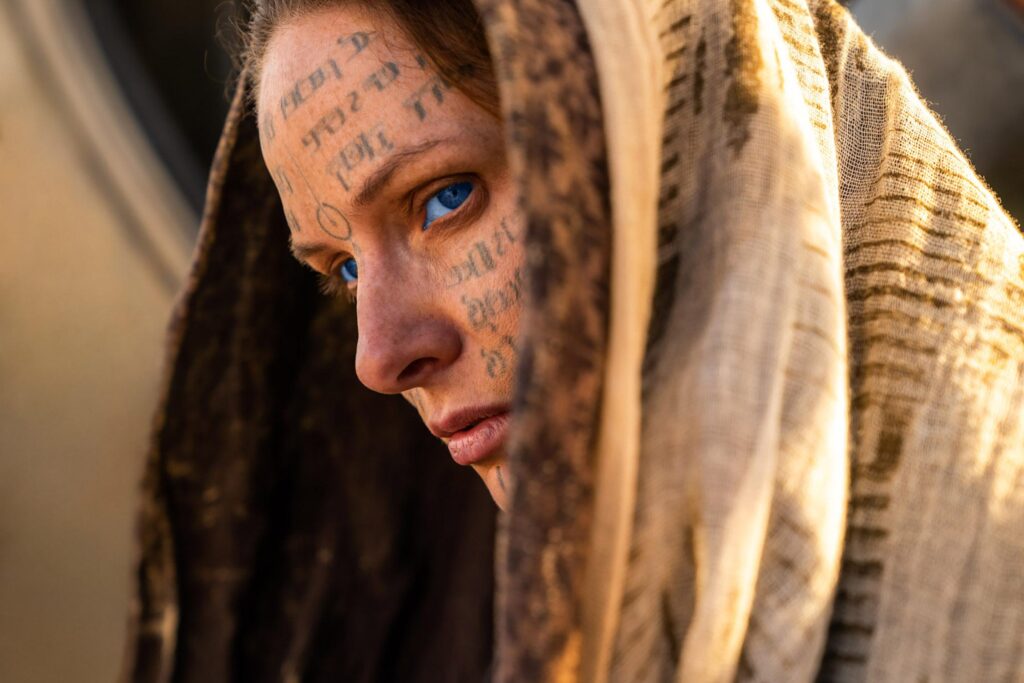
Villeneuve isn’t that kind of textualist, as “Dune” demonstrated. Like in the first, he has once more taken a lot of liberties with Herbert’s monstrosity to create “Part Two,” which he co-wrote with Jon Spaihts. Once more, a great deal of dialogue—both internal and external—as well as characters have been cut or eliminated entirely. (I regretted that the excellent character actor Stephen McKinley Henderson, who appeared in the previous film as a spooky advisor, was not included in this.) The plot, protagonist, and issues are all still present, yet they are also distinct from one another.
Paul Atreides (Chalamet), an aristocrat who turns guerilla and crusader and whose fate rests as much on him as it does on any crown, is the focus of “Dune.” By modifying “Dune,” Villeneuve divided Herbert’s book in half. (Herbert authored six books in the “Dune” series, which, since his passing in 1986, has grown into a multimedia phenomenon.) Paul’s background as the adored only child of a duke named Leto (Oscar Isaac) and his mistress Lady Jessica (Rebecca Ferguson) is introduced and briefly described in the first section. When it opens, the royals are getting ready to leave their home planet, the wet world of Caladan, and head to the arid planet of Arrakis, often known as Dune, under the commands of the emperor of the universe.
The relocation to Arrakis is disastrous; Paul’s father passes away and other members of House Atreides are killed by their foes, particularly the dreary, evil House Harkonnen. After much side-eyeing and mumbling and one of those epic mano-a-mano fights that transform fictional boys into men, Paul and the Lady Jessica make their way into the desert, where they find uncomfortable allies in a group of Fremen, the planet’s Indigenous people. The Fremen are a tribal group ruled by the emperor that have adapted to the harsh environment of Dune with ingenious survival techniques like form-fitting jackets that retain bodily fluids. They are dispersed over the world. While many wait for a savior, some fight to be free.
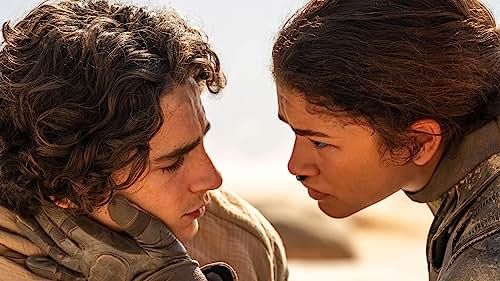
Paul and his mother are sheltering in the desert behind a sand crest from a group of Fremen fighters when “Part Two” begins. Among these are Stilgar (Javier Bardem) and Chani (Zendaya), who represent the many liberation ideologies held by the Fremen. Shortly after the events of the sequel, Stilgar, a man of religion, begins to suspect that Paul is the Fremen messiah. For this reason, Bardem must repeatedly say variants of the same true-believer statement (essentially, Paul is the one!), which he does with animated emotion that ranges from tender to funny. At first, Chani, who also thinks a Fremen should guide them to liberation, regards Paul with just enough raised eyebrows mistrust to add a hint of suspense to their inescapable relationship.
Zendaya and Chalamet create a charming pair, and as their characters get closer, it’s clear that the two actors click. It’s funny yet appropriate for their oversized parts that both actors are attractive and just as watchable as classic Hollywood stars (I was curious about the product he used to control his curls). Together, Chalamet and Zendaya personalize the plot, giving it the crucial personal stakes and a warmth that helps temper the chilling brutality. Individually, they tend to overwork their glowers and puppy eyes in their less chatty scenes—the desert quiet may make casual chatter lethal.
Herbert’s work is an enormous, juicy tome that delves deeply into a delightfully captivating tale about idealism and nihilism, survival and struggle, and belief and doubt. Herbert was a master worldbuilder who created a fanciful world by drawing from an astounding array of inspirations. Even while the novel keeps a connection to the world outside its pages, the outcomes are strange enough to pique readers’ interest and occasionally astonish them. It’s a complex collage, drawing inspiration from Jungian psychology, Shakespearean tragedy, and Greek mythology. It frequently appears to be a warning to the modern era, particularly in its depictions of a hostile environment and religious fanaticism.

The method Villeneuve used to adapt the book is essentially one of careful distillation. Similar to the first film, “Part Two” maintains the spirit of the book, its overall narrative arc, atmosphere, and oddity while advancing the plot in a fluid and simple-to-follow manner through dialogue and action scenes. Even when characters are joking about titles like the Bene Gesserit, the mysterious religious sorority that becomes more prominent in “Part Two,” the speech still sounds normal. Most importantly, the action scenes don’t end the film or make the rest of it feel unimportant. Unlike the tediously predictable transitions between expository and action scenes found in most mainstream adventure films, everything flows in this movie.
Like many modern cinematic spectacles, “Dune” is ultimately a war movie, and soon after “Part Two,” bodies start to fall. The action-packed first scene features Harkonnen warriors soaring in their vehicles and landing on the desert floor under the command of a bald shouter known as the Beast Rabban (Dave Bautista). The soldiers appear too clumsy to take on the flexible fighters known as the Fremen, who have billy goat balance and parkour skills. They are dressed in heavy costumes that make them appear as ponderous as vintage deep-sea divers. However, Villeneuve excels at surprising and knows how to use contrasts—light and dark, massive and puny—to build suspense and intrigue. It doesn’t take long for the Harkonnen to start jetpacking quickly through the air.
Despite the weightiness, intricate plots, and byzantine complexity among several factions, “Part Two” glides with a same deftness. Many well-known names return in the sequel, including Josh Brolin as Gurney Halleck, the devoted follower of Atreides, and Stellan Skarsgard as the terrifying Baron. The Baron, the head of House Harkonnen, mainly spends his time either slaughtering his henchmen or soaking his enormously spherical, frequently nude body in a tub of crude oil. His incompetent nephew Rabban is quickly eclipsed by the most remarkable addition to the “Dune” detachment—another nephew named Feyd-Rautha, a cancer played by an unidentifiable and eerily menacing Austin Butler.
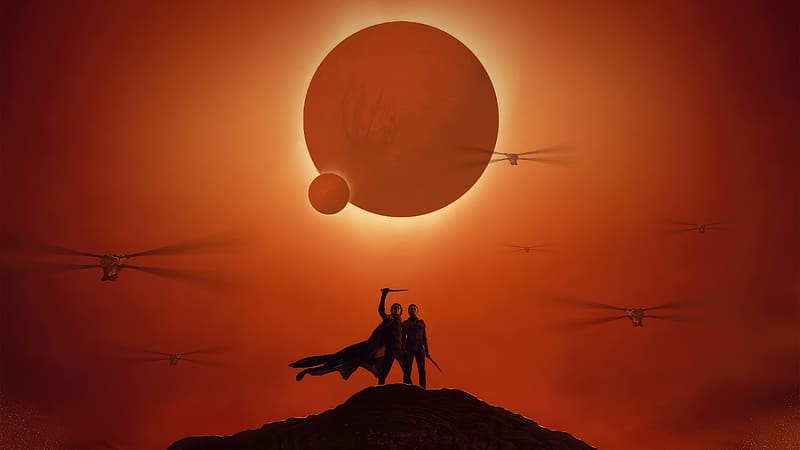
Feyd-Rautha appears to be a worm with extra girth, just like his uncle, who is ethereally white and has no hair. He is just as evil as his uncle and a fighter. Despite Butler’s muscular contours and his seductive pout, he isn’t your typical sexier antihero, and the character remains a troubling narrative mystery. In addition to becoming Paul’s adversary, Feyd-Rautha is a stand-in for the enormous sandworms that travel beneath Arrakis’s surface and yield the planet’s priceless natural resource, known as melange, or spice. Spice sparkles like pixie glitter, changes minds, and turns eyes vibrant blue, but essentially it keeps this universe running—and fiercely churning. It’s as essential as petroleum and as addictive as smack.
Your world, with its cruelty, selfishness, fear mongering, sectarian divisions, battle cries, and power plays, is never far from “Dune.” (In contrast, the sandworms are amazing, otherworldly creatures with lengthy, meaty bodies and bristly, baleenlike maws that create a humorous yet frightening jumble of vaguely gendered, mammalian ideas.) The familiarity of the story contributes to its intensity. Similar to Herbert, Villeneuve has drawn from a variety of sources to construct the universe of “Dune,” including mythology, westerns, war movies, and more. Even David Lynch, the director of the 1984 film “Dune,” is mentioned, but David Lean’s epic “Lawrence of Arabia,” which has its own blue-eyed hero, from 1962 is the clear inspiration.
The biography of T.E. Lawrence, who took part in the 1916 Arab Revolt, which saw Arab armies supported by the British drive the Ottomans from portions of the Middle East, serves as the inspiration for Lean’s film. That film hangs provocatively above “Dune,” with its white savior and the tormented colonialist past it conjures. Of all the difficulties Villeneuve has had in translating the book to the big screen, none have appeared more unsurmountable than sticking to the intricacy of Herbert’s Paul Atreides, whose strength is anything but victorious.
As uncertain about his future as you are, Paul is troubled by his mother’s aspirations and plagued by terrifying dreams. As I mentioned before, Herbert authored five more novels, so don’t anticipate many answers by the end of “Part Two.” However, if you’re like me, you might want to bet on Zendaya.


